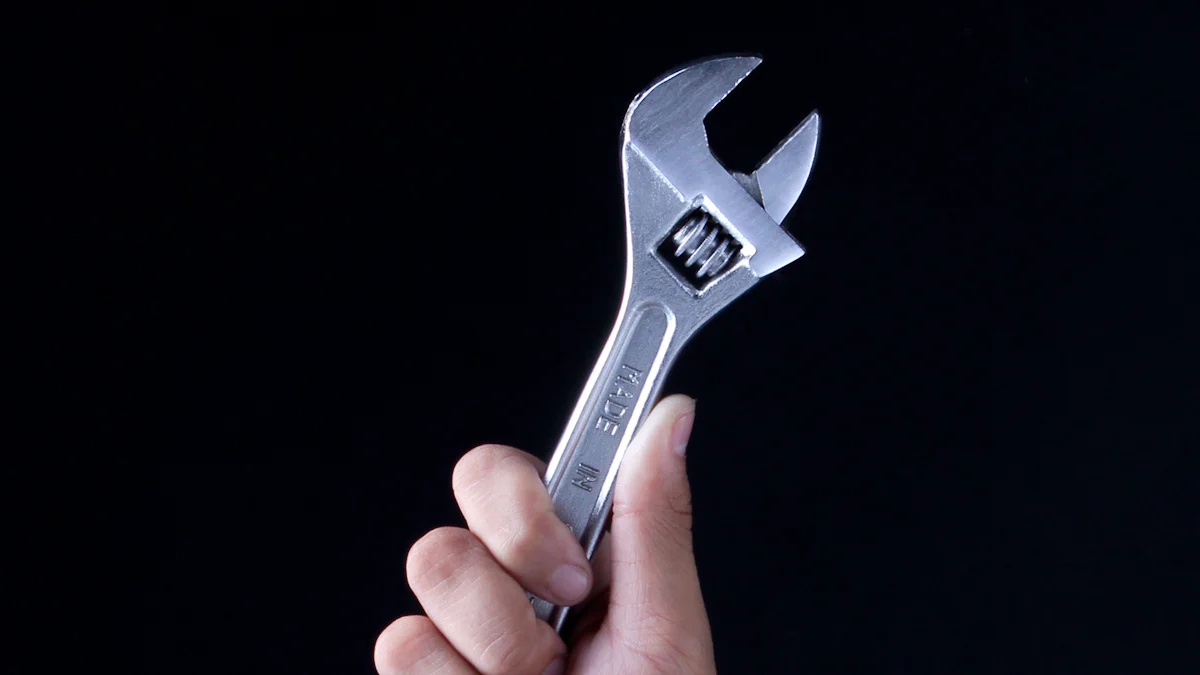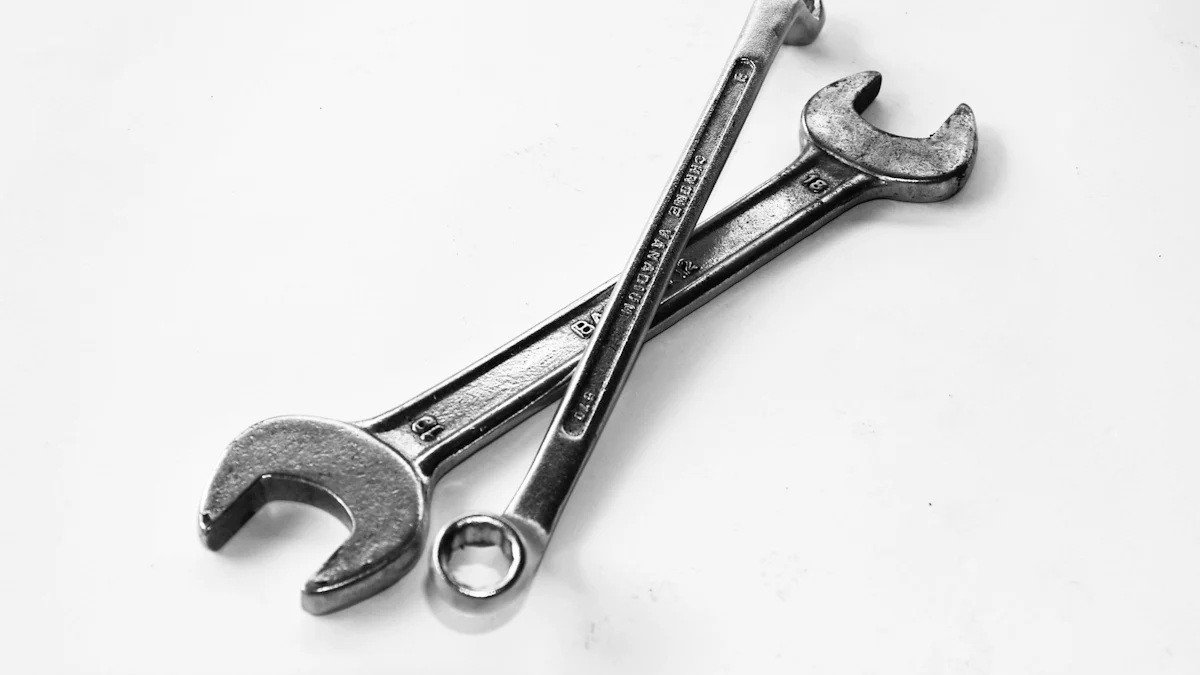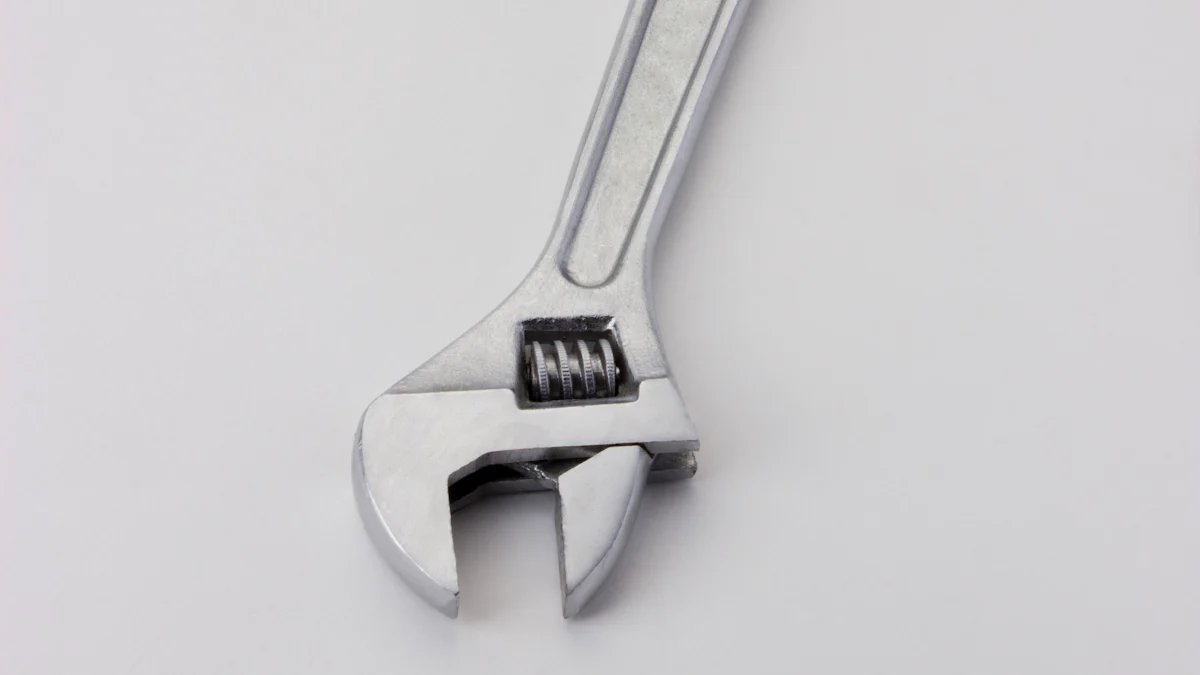
A spanner wrench is a versatile hand tool designed to grip and turn nuts, bolts, pipes, and fittings. Using a spanner wrench correctly ensures the proper tightening and loosening of fasteners, which prevents equipment malfunction and enhances safety. Professionals rely on spanner wrenches for routine upkeep and repair work across various industries, including vehicle maintenance tasks such as adjusting steering linkages and servicing engine components.
To learn how to use a spanner wrench, the end of the spanner must be placed over the nut or bolt firmly, with the jaws of the spanner fitted well onto the flat sides of the nut or bolt. Once the spanner tool is correctly positioned, you can now turn the tool to tighten or loosen the nut or bolt.
Understanding the Spanner Wrench

Types of Spanner Wrenches
Adjustable Spanner Wrenches
Adjustable spanner wrenches, also known as screw wrenches, offer versatility. The jaws can expand or narrow to fit various screws and bolts. This adaptability makes them suitable for different tasks. However, they may not always lock onto bolts precisely. Despite this, they serve as excellent emergency tools due to their flexibility in handling multiple bolt sizes. Common uses include bicycle repairs and home improvement projects. These wrenches save space and weight in toolboxes by acting as multiple spanners.
Fixed Spanner Wrenches
Fixed spanner wrenches come in specific sizes. Each wrench fits only one size of nut or bolt. This design ensures a secure grip and precise torque application. Fixed spanners provide reliability in professional settings. They are ideal for tasks requiring consistent and accurate force. Examples include automotive repairs and machinery maintenance.
Parts of a Spanner Wrench
Handle
The handle provides the user with leverage. A longer handle offers more torque. Handles often feature ergonomic designs for comfort. Materials like steel ensure durability. Some handles have rubber grips to prevent slipping.
Jaws
The jaws grip the nut or bolt. Adjustable spanners have movable jaws. Fixed spanners have static jaws. Proper jaw alignment ensures effective turning. Misaligned jaws can damage fasteners.
Adjustment Mechanism (if applicable)
The adjustment mechanism allows for resizing the jaws. This feature is present in adjustable spanner wrenches. A screw or dial typically controls the jaw width. Users can customize the fit for different fasteners. Regular maintenance keeps the mechanism functional.
Preparing to Use a Spanner Wrench
Selecting the Right Spanner Wrench
Matching the Wrench to the Fastener
Choosing the correct spanner wrench ensures effective and safe operation. Each fastener requires a specific wrench size. Measure the nut or bolt to determine the appropriate wrench size. Use a fixed spanner wrench for precise fits. Adjustable spanner wrenches offer flexibility for various sizes. Ensure the jaws fit snugly around the fastener to prevent slipping.
Checking for Wear and Tear
Inspect the spanner wrench before use. Look for signs of wear and tear. Worn-out jaws can damage fasteners. Check the handle for cracks or bends. Ensure the adjustment mechanism works smoothly. Replace any damaged wrenches to maintain safety and efficiency.
Safety Precautions
Wearing Protective Gear
Safety gear protects against potential injuries. Wear gloves to protect hands from sharp edges. Use safety glasses to shield eyes from debris. Consider wearing long sleeves to protect arms. Proper gear reduces the risk of accidents.
Ensuring a Stable Work Environment
A stable work environment enhances safety and efficiency. Ensure the workspace is well-lit. Clear the area of any obstacles. Use a sturdy surface to work on. Secure the object being worked on to prevent movement. A stable environment prevents accidents and improves precision.
Expert Testimony:
Expert in Spanner Wrenches states, “The use of spanner wrenches is integral to preventing equipment malfunction by ensuring that fasteners are properly tightened and secured. Loose or improperly fastened components can lead to operational issues or even pose safety hazards.”
By following these guidelines, users can ensure the proper and safe use of spanner wrenches.
Step-by-Step Guide to Using a Spanner Wrench

Positioning the Wrench
Aligning the Jaws with the Fastener
Place the spanner wrench over the nut or bolt. Ensure the jaws fit snugly onto the flat sides of the fastener. Proper alignment prevents slipping and damage. A well-aligned spanner wrench provides a secure grip.
Ensuring a Firm Grip
Apply pressure to the handle. This action ensures the jaws maintain contact with the fastener. A firm grip is essential for effective turning. Professionals recommend checking the grip before applying force.
Applying Force
Turning the Wrench Clockwise/Counterclockwise
Determine the direction needed to tighten or loosen the fastener. Turn the spanner wrench clockwise to tighten. Turn counterclockwise to loosen. Use a smooth, controlled motion. Avoid sudden jerks to prevent slippage.
Using Steady, Even Pressure
Maintain steady, even pressure while turning the spanner wrench. This technique ensures consistent torque application. Avoid applying excessive force. Excessive force can damage the fastener or the wrench itself.
Completing the Task
Checking the Tightness/Looseness of the Fastener
After turning, check the fastener’s tightness or looseness. Ensure the nut or bolt is secure but not over-tightened. Over-tightening can strip threads or damage components. Properly tightened fasteners enhance equipment reliability.
Removing the Wrench Safely
Remove the spanner wrench carefully after completing the task. Release the pressure on the handle. Gently slide the jaws off the fastener. Store the wrench properly to maintain its condition.
Maintenance Technicians emphasize that spanner wrenches enable professionals to access and adjust hard-to-reach components with ease. Industrial Professionals highlight the importance of a reliable grip on components such as collars and lock nut rings for precise adjustments.
By following these steps, users will understand how to use a spanner wrench effectively and safely. Proper technique and safety measures ensure successful outcomes in various applications.
Key Takeaways
Summary of Important Points
Correct Selection and Usage
Selecting the right spanner wrench ensures effective operation. Professionals recommend measuring the nut or bolt first. This step helps in choosing the correct wrench size. Fixed spanner wrenches provide a precise fit. Adjustable spanner wrenches offer flexibility for various sizes. Proper jaw alignment prevents slipping and damage.
Safety Measures
Safety measures protect users from potential injuries. Wearing gloves shields hands from sharp edges. Safety glasses protect eyes from debris. A well-lit workspace enhances visibility. Clearing obstacles ensures a stable work environment. Securing the object being worked on prevents movement.
Proper Technique
Proper technique involves several key steps. Positioning the spanner wrench correctly is crucial. Aligning the jaws with the fastener ensures a secure grip. Applying steady, even pressure prevents damage. Checking the tightness or looseness of the fastener ensures proper adjustment. Removing the wrench safely maintains its condition.
Testimonial:
“I purchased this one, and it’s very well made. I have to say it’s the best spanner wrench I’ve ever used, because, well, it’s the only one I’ve ever used. I’ve used it successfully to dismantle a bunch of lenses though, and it’s never given me a problem.”
Frequently Asked Questions (FAQs)
Common Issues and Solutions
What to Do if the Wrench Slips
A slipping wrench can cause damage and injury. Always select a spanner wrench that fits the nut or bolt properly. Ensure the jaws align with the flat sides of the fastener. Misalignment often leads to slipping. Apply steady, even pressure when turning the wrench. Avoid sudden jerks. Check the wrench for wear and tear. Worn-out jaws can slip easily. Replace damaged tools to maintain safety.
How to Handle Stubborn Fasteners
Stubborn fasteners require extra care. Use penetrating oil to loosen rusted or stuck nuts and bolts. Apply the oil and wait a few minutes. This step helps in breaking the rust bond. Use a longer handle spanner wrench for more leverage. More torque makes it easier to turn stubborn fasteners. If the fastener remains stuck, use a breaker bar. A breaker bar provides additional force without damaging the wrench. Always ensure a firm grip on the fastener. Proper technique prevents damage and ensures successful loosening.
Correct usage of a spanner wrench is crucial for preventing equipment malfunction and ensuring safety. Practicing the outlined steps will enhance proficiency and confidence in handling various tasks. Readers are encouraged to leave comments or questions for further clarification.
See Also
Discovering the Range of Socks for Males and Females
